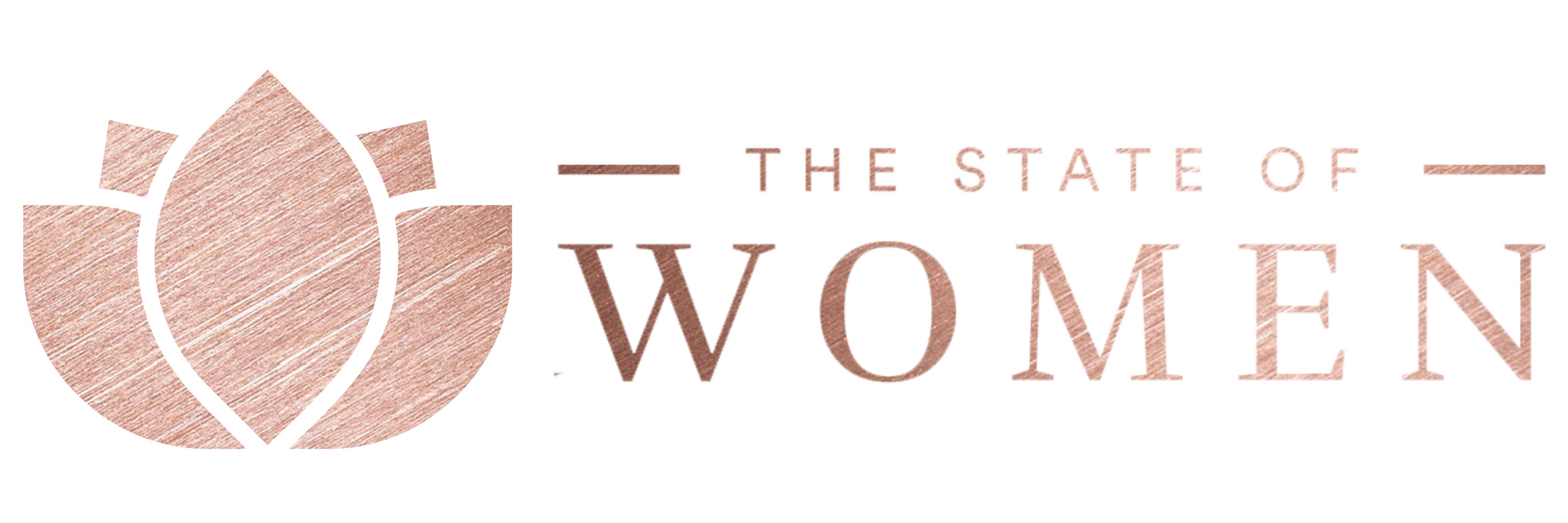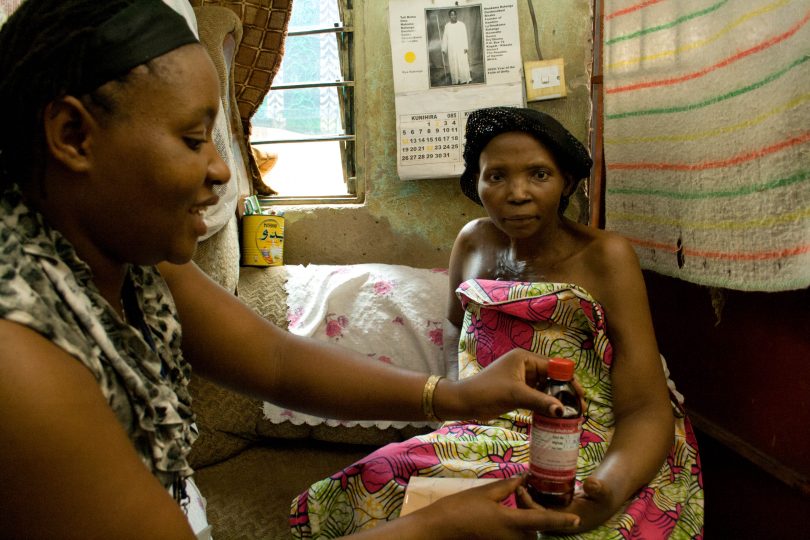This article originally appeared on the Women & Girls Hub of News Deeply, and you can find the original here. For important news about issues that affect women and girls in the developing world, you can sign up to the Women & Girls Hub email list.
By Grainne Harrington
Uganda’s underfunded health system struggles to effectively treat the country’s growing number of cancer patients. But for the terminally ill, a small hospice organization has come up with a homemade pain relief treatment that has revolutionized end-of-life care.
KAMPALA, Uganda – Roselight Katusabe sets off for work in the morning with her usual tools: patient notes and a pen, some gauze dressings, and a suitcase full of morphine. Katusabe is a palliative care nurse at Hospice Africa Uganda (HAU), an NGO based in Kampala, which focuses on home care. The bottles of morphine she brings to her patients have revolutionized the way terminally ill people spend their final days in Uganda. And it all began at a kitchen sink in the hospice, where for 17 years healthcare workers made up the solution for thousands of patients.
“It’s easier to make than a cup of coffee,” says Dr. Anne Merriman, the British founder of HAU. Merriman, a palliative care specialist and former missionary doctor, developed her own formula for affordable oral morphine while working in Singapore, and brought it to Uganda in 1993. At the time, the most commonly used analgesic for severe pain was codeine. Commercial injectable morphine was expensive and only available in hospitals on an “as needed” basis, which Merriman says left patients in pain. To make HAU’s cheaper, oral solution, “all you need is accurate scales to weigh the [morphine] powder, then all you do is add distilled water, a preservative … and then we add a dye to show the strength,” says Merriman.
These days, the formula hasn’t changed, but the kitchen sink has been replaced by a modern laboratory. Since 2011, the hospice, in partnership with the Ugandan government, has been manufacturing its morphine solution for the entire country, free of charge.
In Uganda, where the underfunded health system struggles to provide even basic care, morphine is the key to pain relief and a better end of life for thousands of cancer patients. HAU’s homemade approach makes the drug affordable: While other countries buy injections and tablets from pharmaceutical companies, a 10-day supply of oral solution costs just $2.
And by pioneering a system that allows nurses to administer morphine, Uganda has led the way in palliative care for cancer patients in low-income countries.
On this day’s rounds, Katusabe is delivering a bottle of Merriman’s formula to Agatha, a 38-year-old battling stage-four breast cancer, at her home in a slum in Kawempe, northern Kampala. The nurse takes out a brown bottle and a dosing syringe, shows the patient how much she should take and gently answers her questions. When asked what difference the hospice has made to her life, Agatha pauses. She cannot express it in words, she says.
The palliative care Agatha is receiving is unique in this region. Uganda was the first country in the world to let specially trained and registered nurses administer morphine, a job previously reserved for doctors. This development, too, was largely due to Merriman and her NGO. When HAU was founded, the country was going through one of the worst AIDS epidemics in the world, and widespread immunodeficiency led to a rise in many types of cancer. The minister of health at the time immediately agreed to Merriman’s plan to introduce her cheap morphine solution, but doctors were far more reticent, fearing it would lead to addiction and overdose.
“The doctors said we were bringing in euthanasia,” says Merriman. “Many of those senior doctors would not let any of their patients have morphine. They said, ‘They’re going to be addicted.’”
As cancer rates continued to rise, Merriman realized her morphine wouldn’t get to the people who needed it unless the number of prescribers increased. Nurses were already allowed to administer another opioid drug, pethidine, to women in labor. In 1998, HAU began to lobby the Ministry of Health to widen the legislation so that nurses could also prescribe morphine. The change eventually went through in 2004. Uganda has an average of one doctor per 20,000 people but almost twice as many nurses, so allowing nurses to administer the homemade morphine solution has made affordable pain relief accessible from the capital right down to village level.
Merriman credits the Ugandan government’s progressive policymaking for bringing about radical changes in the way people with terminal illness are treated in the country. In the Economist’s 2015 Quality of Death Index, Uganda ranked 35th out of 80 countries, and was one of only two African countries in the top 50, along with South Africa.
But while it has made strides in quality of death for cancer patients, Uganda’s healthcare system still struggles to provide effective treatment that could improve their quality of life. Katusabe’s patient was diagnosed when her illness was at stage two. In many countries, this is early enough to hope for a good outcome, but Agatha first turned to a traditional healer for help – she didn’t seek medical treatment until her cancer was advanced.
The Uganda Cancer Institute says that 75 to 80 percent of cancer patients are diagnosed at stage three or four, when surgery and other curative therapies are far less effective. Part of this is due to a lack of awareness, despite a considerable outreach effort on the part of the Ugandan government and other organizations. Financial constraints also play a big part. Hospitals frequently run out of necessary drugs, Katusabe says.
And even when treatment is available, it’s often too expensive for most Ugandans. According to HAU, a four-week course of chemotherapy can cost from $900 to $1,000. Because of this, Katusabe says patients who know they can’t afford treatment will simply accept a cancer diagnosis as a death sentence.
In April, Uganda’s only radiotherapy machine broke down after years of disrepair. Replacing it will take over a year. In the meantime, patients who can afford it have been told to go to neighboring Kenya for treatment.
After leaving Agatha, Katusabe visits two cervical cancer patients who are going for treatment in Nairobi with HAU funding. The women are cheerful and hopeful that radiotherapy will help. But for many other cancer patients in Uganda, Katusabe and her plastic bottles of morphine are the best relief they can hope for.



